Like you, we too were in awe of the sheer audacity of WandaVision. Just two episodes in and the series is already a triumph in so many ways. Just look at how it leans (hard) into and uses its TV sitcom trope, not just as a cute homage, but as a manner by which to drive action, and character, and plot. Nothing here is superfluous or for its own sake. Every reference and callback, every Easter Egg, be it to I Love Lucy or Bewitched, to the comics or other Marvel movies, is done with purpose. As a hint to a much larger and more sinister mystery. As as a way to grow these characters within the greater Marvel Cinematic Universe.
But what’s more, showrunner Jac Schaeffer and director Matt Shankman have managed to successfully craft a series that looks and sounds so different, yet feels completely in step with everything that has come before.
And while we loved every minute of it, we’re not going to pretend like we knew exactly what was going on in those first two episodes of WandaVision. That said, we do have some theories, and we thought that a series of articles explaining everything we know, and everything we think we know, might be of help in furthering your understanding of just what the hell is going on in the town of Westview.
So here we go…
| Season 1 | Episode 1: “Filmed Before a Live Studio Audience” | 30 minutes |
| Director | Matt Shankman | Writer | Jac Schaeffer |
| Wanda and Vision struggle to conceal their powers during dinner with Vision’s boss and his wife. |
WandaVision kicks off with a tribute to the sitcoms of the 1950s, namely The Dick Van Dyke Show and I Love Lucy, with the plot of this episode (and the next) pulling from an all too familiar sitcom setup. Vision’s future at the ambiguously named Computational Services is dependent on whether or not he – and Wanda – can host the perfect dinner party for his boss Mr. Hart. (No doubt named for Steve Englehart, one of the most influential comic writers to ever work on the stories of Vision and the Scarlet Witch.) Meanwhile, back at home, a miscommunication between the couple leads Wanda to believe that she is actually planning an anniversary party for her husband. Much hijinks ensue.
Bosses showing up for dinner and missed anniversaries are tried and tested tropes. We’ve seen these same narrative beats used in almost every sitcom (ever) across the decades. But here it runs deeper. Is there a better metaphor for the life of a superhero than the television sitcom? These are characters whose existence are predicated quite literally on one quest after another, where every victory marks the beginning of yet another crisis, and another fight. Where they win, and lose, and die, and are reborn. Over and over again. Forever.
It’s a lot like format television. Where every episode feels like a fresh start. Every morning a new adventure. Where peace, and happiness, and a perfect life is always just 24 (or so) minutes away.
The promised “normalcy” of the family sitcom is the one thing that Wanda yearns for. And this series, with it its profoundly depressing, fake picket fenced portrayal, with its canned laughter and on cue sighs, punctuating a life that isn’t real, is setting us up for an agonising confrontation with the tragedy of Wanda Maximoff’s existence.
Oh, a Newlywed Couple Just Moved to Town…
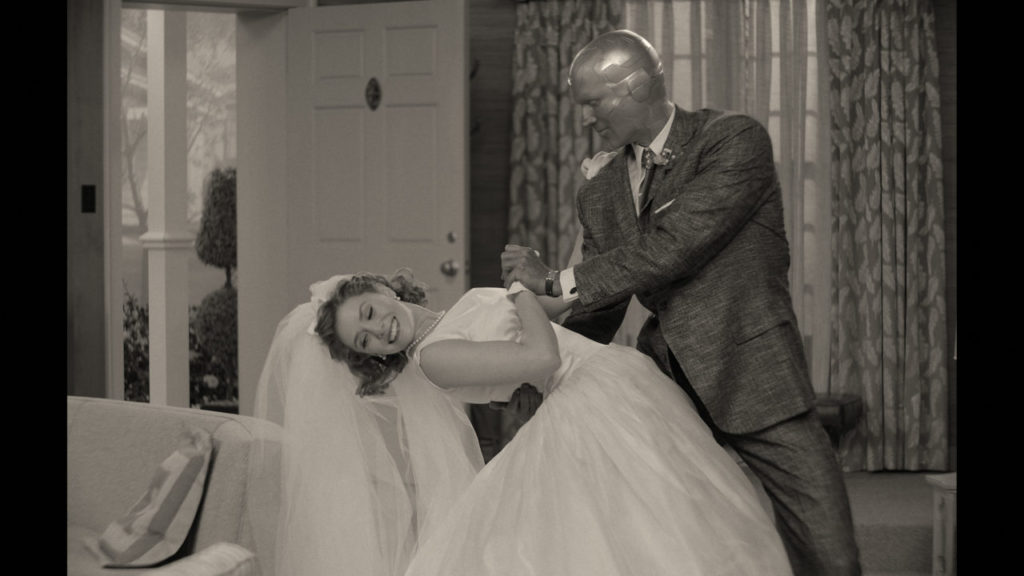
The theme song to the first episode of WandaVision, a callback to the TV themes of the 1950s, opens with the following lyrics: “Oh, A newlywed couple just moved to town, a regular husband and wife, who left the big city to find a quiet life…” This is likely a reference to the 1985 limited series The Vision and the Scarlet Witch by Steve Englehart and Richard Howell, the premise of which sees both our heroes resign their commission with the Avengers and move to the suburbs in order to live a “normal life” as husband and wife.
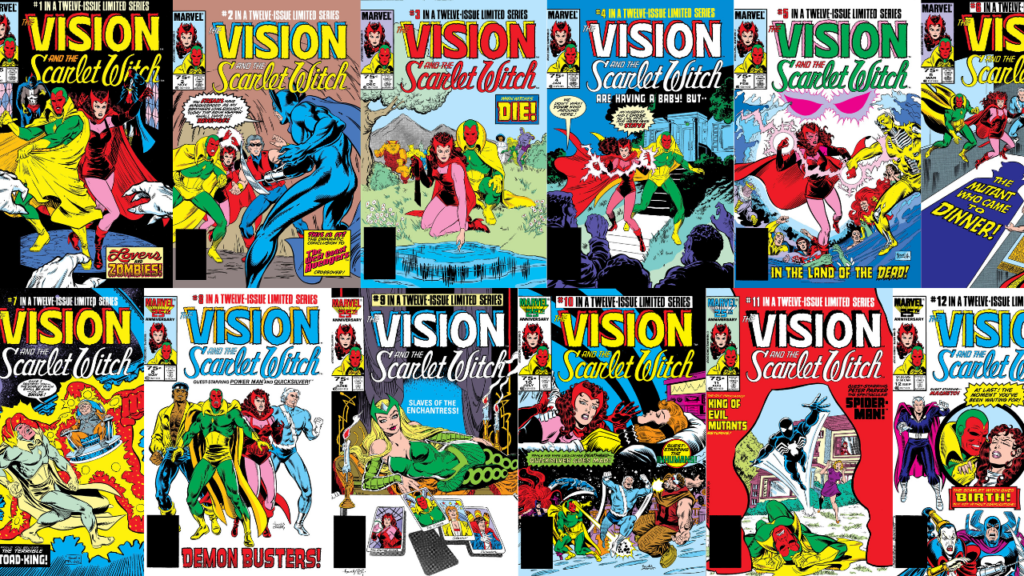
Who is Agnes?
So, just who is Kathryn Hahn’s Agnes? Is she just a friendly neighbour? Or is she, as some fans have theorised, Wanda’s mentor from the comics, AGatha HarkNESs? Get it? AGNES. We know, it seems like a bit of a stretch. Then again, she does seem to be compulsively wearing the same brooch that Agatha does in the comics.
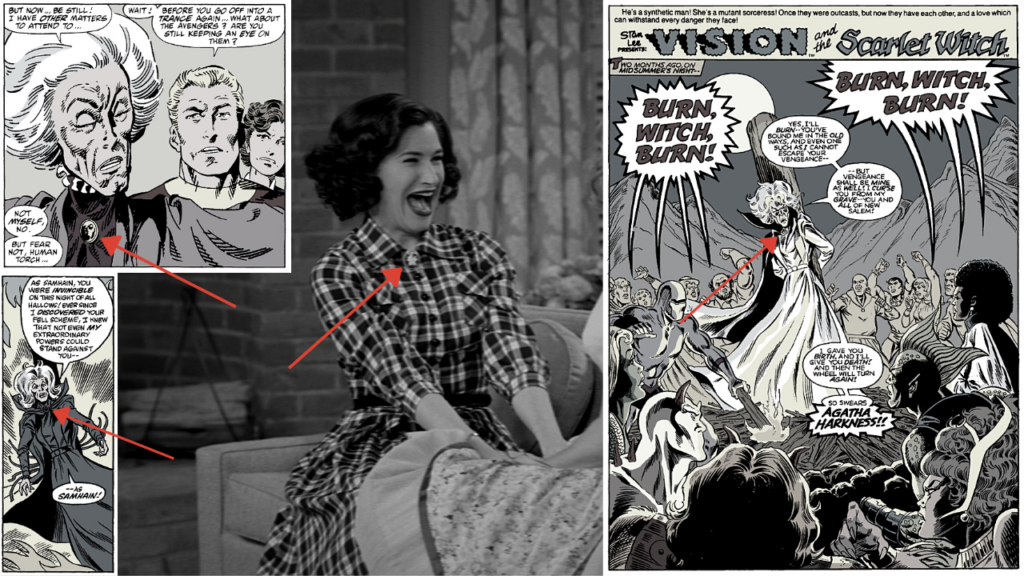
What’s Up With That Fake Toaster Ad?
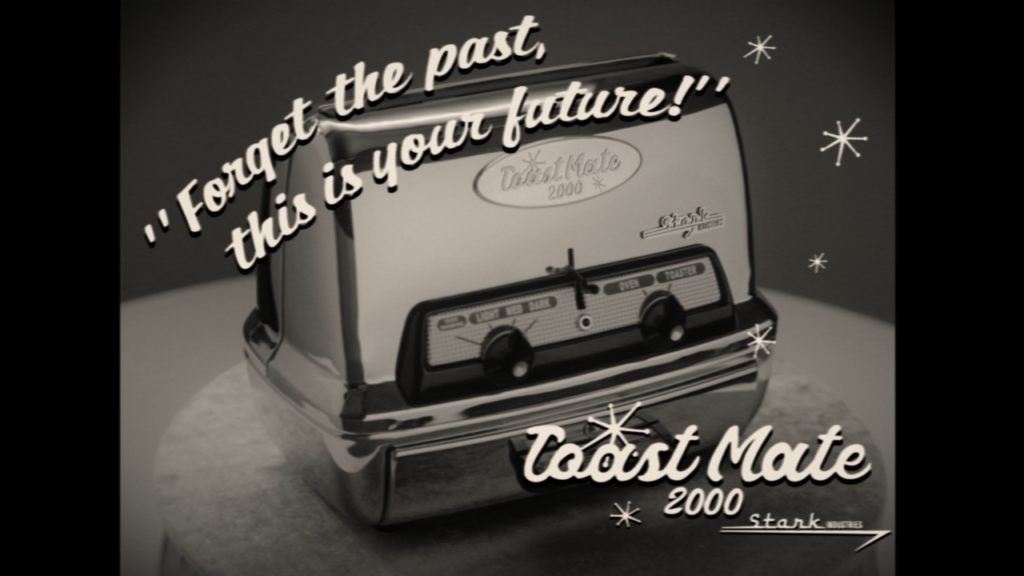
A fake commercial during the WandaVision TV show advertises a Stark Industries ToastMate 2000 toaster oven. This could be a reference to Vision’s origins in Avengers: Age of Ultron, when the synthezoid is created after Tony Stark and Bruce Banner upload the J.A.R.V.I.S. AI into a synthetic body. As for the “toaster” reference, that is likely taken from Tom King and Gabriel Hernandez Walta’s acclaimed graphic novel, The Vision. (As far as we can tell, this was the first time the word “toaster” was used as a derogatory descriptor for Vision.)
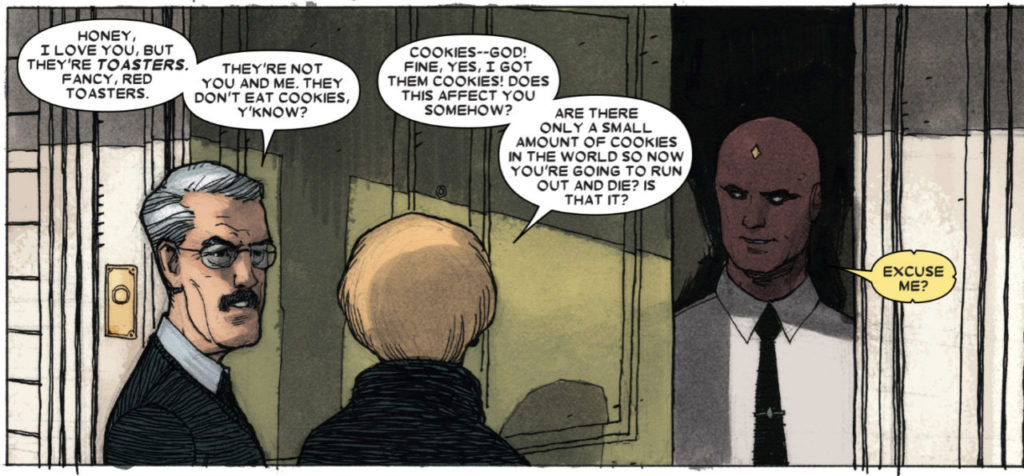
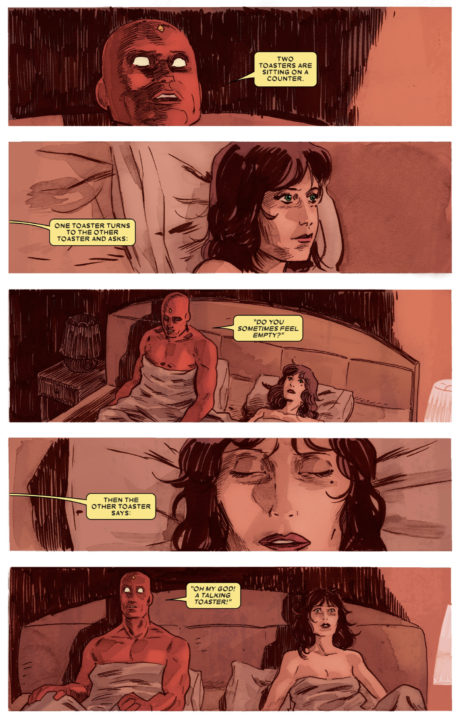
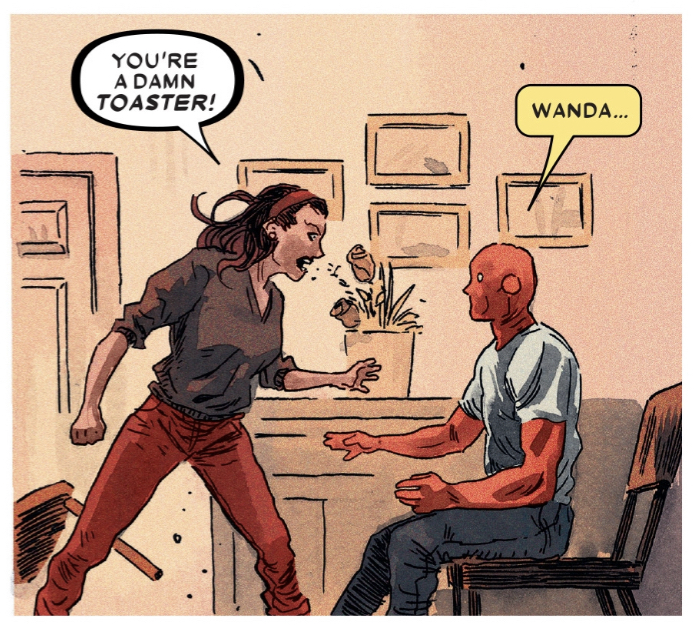
Just Who or What Is S.W.O.R.D.?
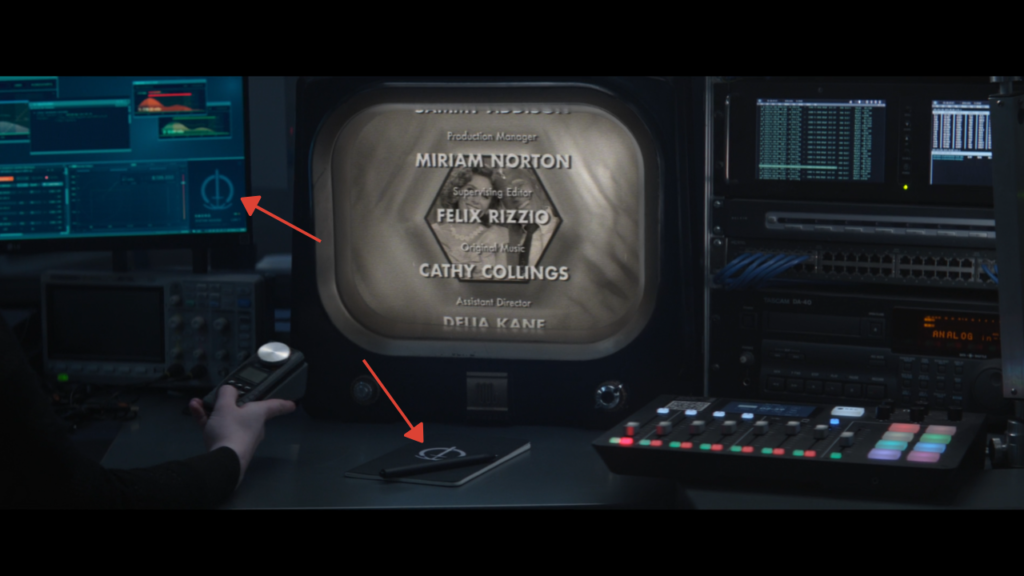
S.W.O.R.D. or Sentient Weapon Observation Response Division (as they are called in the Marvel Cinematic Universe) is the sister agency to S.H.I.E.L.D. Think FBI and CIA. One handles threats from within while the other handles threats from without.
Our first encounter with S.W.O.R.D in the MCU was during the post-credits tag in Spider-Man: Far From Home, where we see Samuel L. Jackson’s Nick Fury seemingly on vacation in a giant space station. In the comics, S.W.O.R.D. were created to protect Earth from hostile alien threats and monitor extraterrestrial incursions from their orbiting headquarters known as “The Peak.” We don’t know what their role is within the MCU, but from the final moments of this first episode, it looks like someone from S.W.O.R.D. seems to be monitoring Wanda’s “reality.”
Other Easter Eggs and Wild Speculations
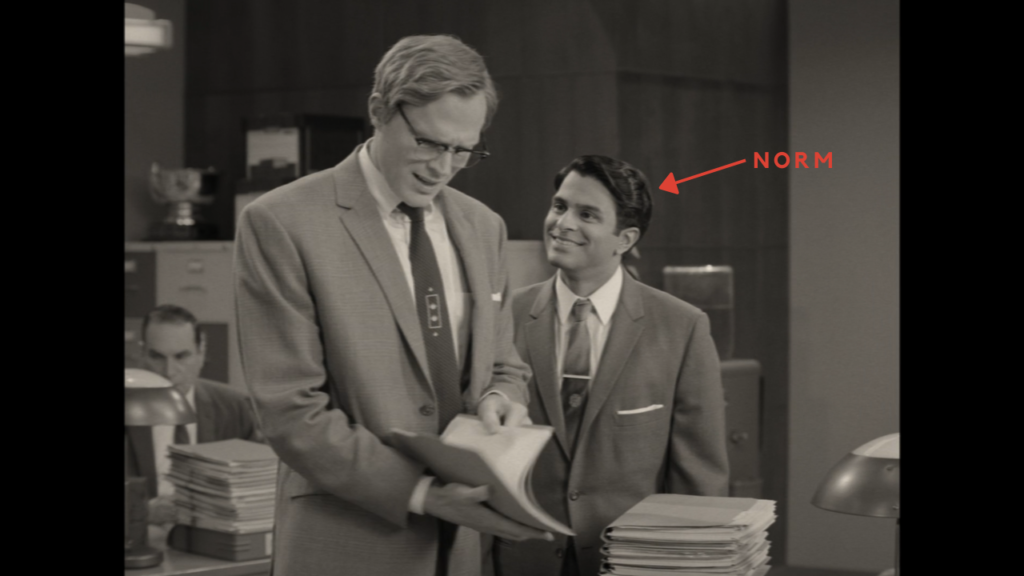
- Vision’s colleague Norm might be a reference to the character Norm Webster who was Vision and Wanda’s real estate agent in that Englehart and Howell limited series.
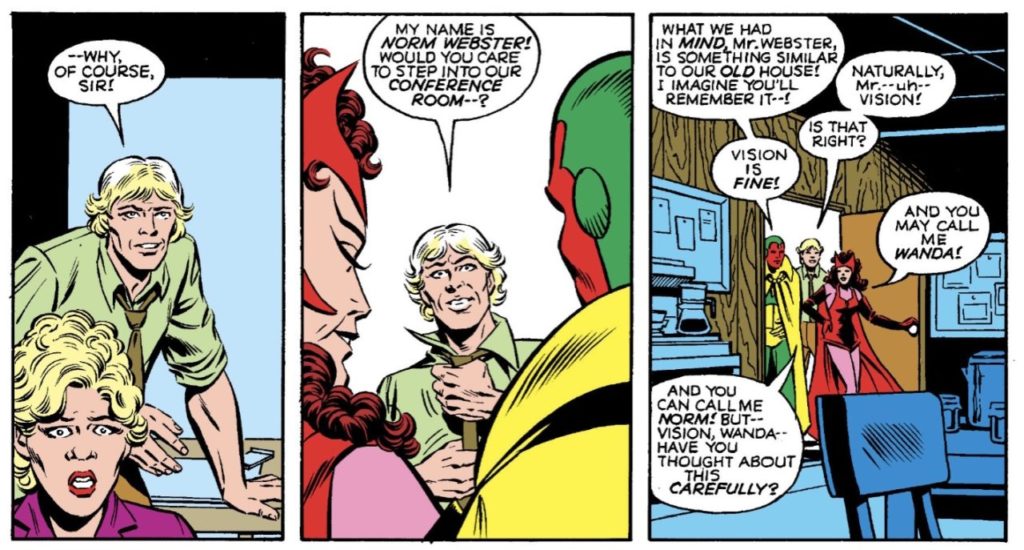
- The label on the wine bottle, Maison Du Mépris, roughly translates to “House of Contempt,” or “House of Scorn,” or maybe just “House of M?” (I know, we’re grasping.)
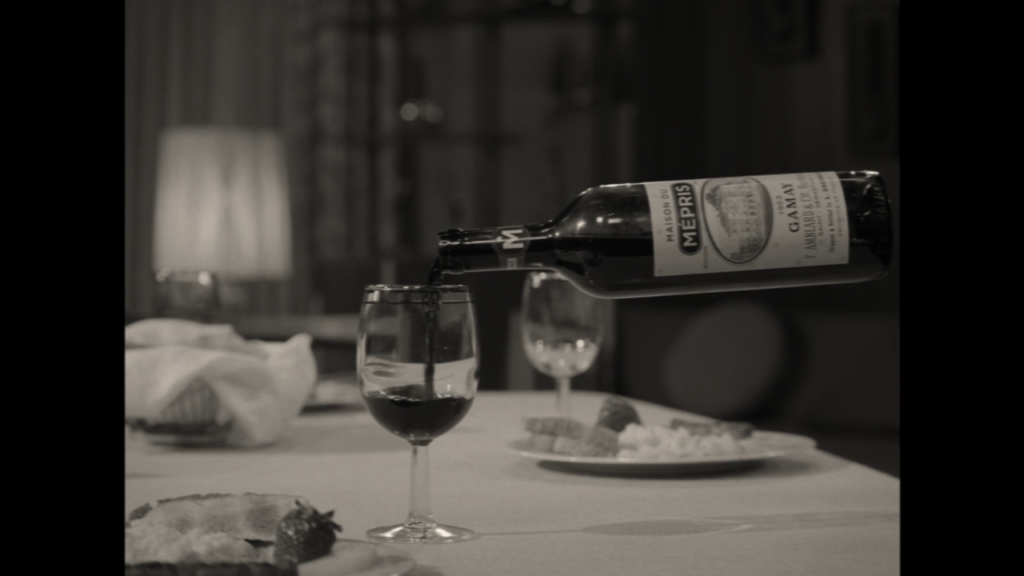
- And finally, with regards to the fake credits at the end of the episode. “Producer” Babs Digby could be a reference to a character from another 1950s sitcom The Life of Riley. Could “director” Abe Brown be a reference to the character played by Abraham Attah in Spider-Man: Far From Home? The other names in the credits – Leonard Hooper, Pamela Brewster, Sammy Addison, Miriam Norton, Felix Rizzo, Cathy Collings, and Delia Kane – don’t ring any immediate bells. But do let us know if you’ve got any thoughts or theories on who or what they might be references to.

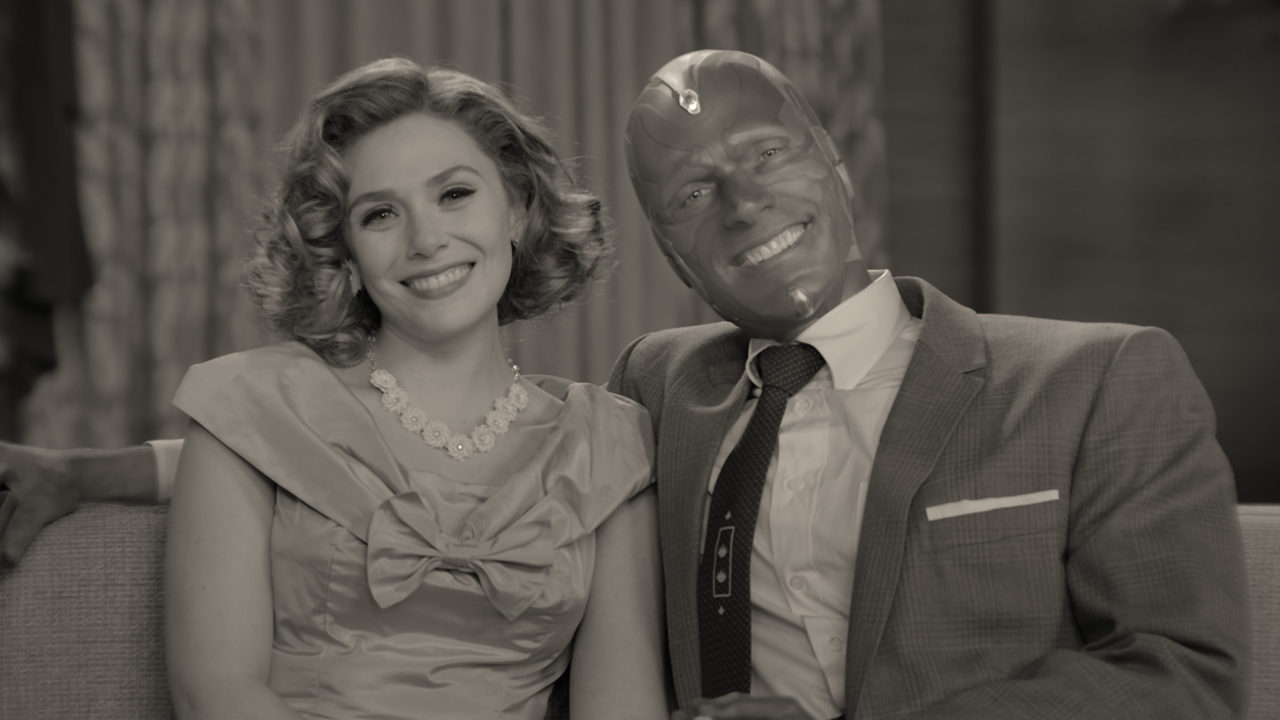
Follow Us